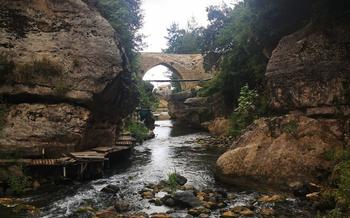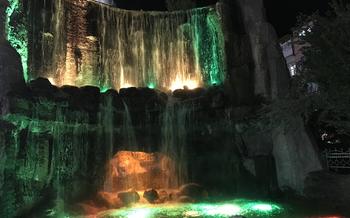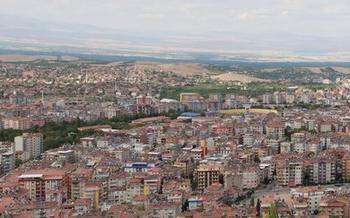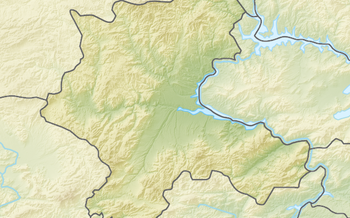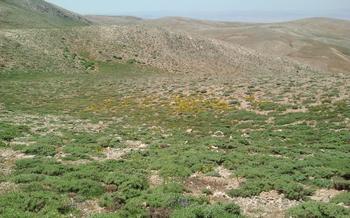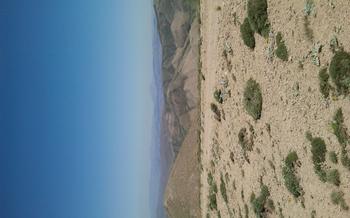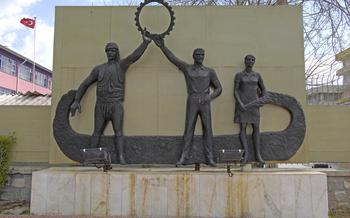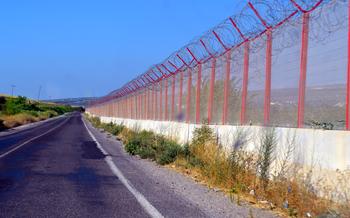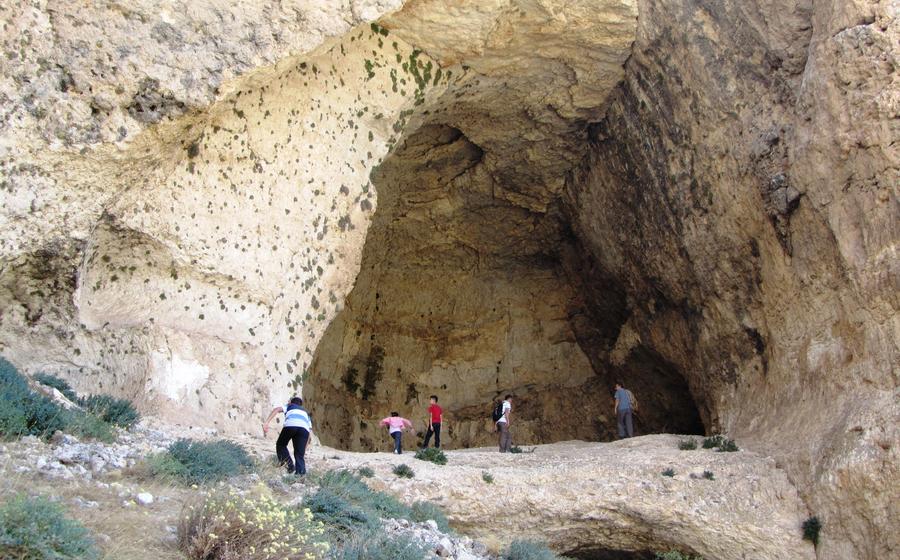
Akçadağ Cave
- Historical Significance
- Geological Formations
- Archaeological Findings
- Cave Exploration
- Natural Beauty
- Guided Tours
- Photography Opportunities
- Wildlife and Conservation Efforts
- Cultural Significance
- Historical Context
- Local Cuisine and Hospitality
- Getting There and Accessibility
- Local Festivals and Events
- Nearby Attractions
- Insider Tip: Discover the Hidden Chamber of Wonders
Historical Significance
The Akçadağ Cave, located in the heart of Malatya, Turkey, holds immense historical significance. Its discovery in the 1950s unveiled a treasure trove of ancient artifacts and remnants, shedding light on the region's rich and diverse past. Archaeologists have unearthed a remarkable collection of tools, pottery, and jewelry within the cave, providing tangible evidence of human habitation dating back to the Neolithic period. These findings suggest that the cave served as a sanctuary and a dwelling place for prehistoric communities, offering shelter and protection in a rugged and unforgiving landscape.
Legends and folklore entwined with the Akçadağ Cave add to its allure. Local tales speak of hidden chambers and secret passages leading to lost treasures and forgotten civilizations. The cave's enigmatic atmosphere and its connection to ancient cultures have captivated the imagination of generations, inspiring stories and myths that continue to be passed down through the ages.
Geological Formations
The Akçadağ Cave is renowned for its extraordinary geological formations, which have been shaped over millions of years by the relentless forces of water and minerals. As visitors delve into the cave's depths, they are greeted by a dazzling array of stalactites and stalagmites, which hang from the ceiling and rise from the ground, respectively. These mesmerizing formations are the result of a continuous process of water seeping through the limestone rock, dissolving the minerals and redepositing them in the form of calcite crystals.
The cave's walls are adorned with a variety of rock types, including limestone, dolomite, and travertine. These rocks, formed through different geological processes, contribute to the cave's unique and diverse geological landscape. Visitors can also observe various minerals, such as calcite, aragonite, and gypsum, which add to the cave's visual appeal and scientific significance.
The geological formations of the Akçadağ Cave hold immense scientific value. They provide insights into the geological history of the region and the processes that have shaped the cave over time. Moreover, the presence of different rock types and minerals makes the cave an important site for geological studies and research.
Archaeological Findings
Archaeological excavations conducted within the Akçadağ Cave have uncovered a wealth of artifacts and tools that shed light on the region's rich history. These discoveries include flint tools, pottery fragments, and animal bones, providing valuable insights into the daily lives of the cave's ancient inhabitants. Among the most significant findings are a series of well-preserved wall paintings depicting hunting scenes, animals, and human figures. These paintings offer a glimpse into the artistic expressions and cultural practices of the people who once called this cave home. Furthermore, the excavations have revealed evidence of human occupation dating back to the Paleolithic era, suggesting that the cave served as a refuge for early humans seeking shelter and sustenance. Ongoing archaeological research continues to uncover new artifacts and insights, contributing to our understanding of the cave's role in the region's prehistoric and historical past.
Cave Exploration
Exploring the Akçadağ Cave offers a thrilling and unforgettable experience for adventure enthusiasts. Before embarking on your journey, familiarize yourself with the different levels of difficulty and routes available. For beginners, the cave's upper levels provide an accessible introduction to cave exploration, showcasing stunning formations and easy-to-navigate passages. More experienced cavers can delve deeper into the cave's lower levels, where challenging climbs and tight squeezes lead to hidden chambers and breathtaking sights.
Regardless of your skill level, safety is paramount. Always explore the cave in the company of an experienced guide and adhere to their instructions. Proper equipment is essential, including sturdy shoes, a helmet, a headlamp, and warm clothing. Be prepared for uneven terrain, slippery surfaces, and cool temperatures inside the cave.
For a truly immersive experience, consider joining a guided adventure tour. These tours typically include rappelling, crawling, and climbing, providing a comprehensive exploration of the cave's hidden corners. Whether you're a seasoned caver or a first-timer seeking a unique adventure, the Akçadağ Cave offers an unforgettable journey into the depths of the earth.
Natural Beauty
The Akçadağ Cave is renowned for its breathtaking natural beauty, which mesmerizes visitors with its unique formations and stunning vistas. As you explore the cave's chambers and galleries, you'll be captivated by the interplay of light and shadow, which creates a magical and awe-inspiring atmosphere. The cave's walls are adorned with intricate stalactites and stalagmites, which have been shaped over thousands of years by the slow dripping of water. These formations come in a variety of shapes and sizes, creating a surreal and otherworldly landscape.
One of the highlights of the cave is its crystal-clear water pools, which reflect the cave's walls and formations, creating a mirror-like effect. The water's surface is often still and undisturbed, allowing for perfect reflections that capture the cave's beauty in a unique way. The pools also add to the cave's acoustics, creating a sense of tranquility and serenity.
The lighting conditions within the cave are constantly changing, depending on the time of day and the angle of the sunlight. This creates a dynamic and ever-evolving display of colors and shadows. The cave's walls and formations are illuminated in a soft, ethereal glow, which enhances their intricate details and textures.
Exploring the Akçadağ Cave is a truly immersive experience, where you can marvel at the wonders of nature and feel a sense of awe and wonder. The cave's natural beauty is sure to leave a lasting impression on visitors and create memories that will last a lifetime.
Guided Tours
Exploring the Akçadağ Cave with a knowledgeable and experienced guide offers a plethora of benefits that enhance the overall experience for visitors. Guided tours provide a deeper understanding of the cave's historical significance, geological formations, and archaeological findings. The guides not only share fascinating insights and stories about the cave but also ensure the safety of visitors by navigating them through the cave's intricate passages and highlighting potential hazards.
When choosing a guided tour, visitors have several options to suit their interests and needs. General guided tours offer a comprehensive overview of the cave, covering its history, geology, and archaeology. Photography tours cater to enthusiasts seeking to capture the cave's unique beauty and formations. Adventure tours, on the other hand, provide a more thrilling experience, often involving crawling, climbing, and squeezing through narrow passages for a closer look at the cave's hidden wonders.
To ensure a successful guided tour, visitors should consider the following tips:
- Research and choose a reputable tour operator: Read reviews, compare prices, and consider the expertise and reputation of the tour company before making a booking.
- Book in advance: Guided tours, especially during peak season, can fill up quickly. Booking in advance will guarantee a spot and avoid disappointment.
- Wear appropriate clothing and footwear: The cave can be damp and slippery, so comfortable, non-slip shoes are essential. Lightweight clothing is recommended, as the cave's temperature can vary.
- Bring a camera: The Akçadağ Cave offers exceptional photography opportunities. Bring a camera with a wide-angle lens and a tripod for low-light conditions.
- Follow the guide's instructions: The guide is there to ensure your safety and provide valuable information. Listen carefully to their instructions and follow their guidance throughout the tour.
- Ask questions: Don't hesitate to ask your guide questions about the cave's history, geology, or any other aspect that interests you. They are there to share their knowledge and make your experience as enriching as possible.
Photography Opportunities
The Akçadağ Cave offers exceptional photography opportunities for enthusiasts of all skill levels. The unique lighting conditions and compositions create a dreamlike atmosphere, allowing photographers to capture stunning and memorable images. The cave's natural features, such as the stalactites and stalagmites, provide a mesmerizing backdrop for creative shots.
For optimal photography results, it is recommended to use a tripod and a wide-angle lens to capture the vastness of the cave's chambers. Experiment with different shutter speeds and apertures to achieve the desired effects. The interplay of light and shadow within the cave creates dramatic silhouettes and textures, making it a paradise for black-and-white photography.
For those interested in capturing the cave's vibrant colors, a flash or artificial lighting can be used to enhance the hues of the rock formations. Long exposure photography can also be employed to capture the movement of water droplets or the subtle flow of air currents within the cave.
Whether you are an experienced photographer or just starting out, the Akçadağ Cave is a treasure trove of photographic opportunities that will ignite your creativity and leave you with lasting memories. Embrace the challenge of capturing the cave's essence through your lens and share your stunning images with the world.
Wildlife and Conservation Efforts
The Akçadağ Cave is home to a diverse range of wildlife, including bats, spiders, insects, and various bird species. These creatures play a crucial role in maintaining the cave's delicate ecosystem. The cave also provides a haven for several endangered species, such as the Mediterranean monk seal and the green turtle, which find refuge in its secluded waters.
Conservation efforts are underway to protect the cave's unique ecosystem and its inhabitants. The local government has designated the cave as a protected area and implemented strict regulations to minimize human impact. Visitors are encouraged to adhere to these regulations and follow responsible tourism practices, such as avoiding disturbing the wildlife, leaving no trace, and using flash-free photography.
By working together, we can ensure that the Akçadağ Cave remains a thriving habitat for wildlife and a pristine natural wonder for generations to come.
Cultural Significance
The Akçadağ Cave holds immense cultural significance for the local community of Malatya. Its unique geological formations and historical importance have made it an integral part of local traditions and folklore. The cave is often mentioned in local legends and tales, which have been passed down through generations. These stories often revolve around mythical creatures, hidden treasures, and ancient rituals performed within the cave's depths.
The cave also plays a role in local festivals and celebrations. During the annual Malatya Cherry Festival, the cave is illuminated with colorful lights and becomes a popular venue for cultural performances, art exhibitions, and traditional music concerts. The cave's natural acoustics create a magical atmosphere for these events, making them a truly unforgettable experience.
Moreover, the cave's significance extends beyond its physical presence. It represents a symbol of resilience and continuity for the people of Malatya. Despite the passage of time and the changes that have occurred in the region, the cave remains a constant reminder of their rich cultural heritage and the enduring spirit of the local community.
Historical Context
The Akçadağ Cave has a rich and storied past, deeply entwined with the history of the Malatya region. In ancient times, the cave served as a refuge and shelter for early human settlers, as evidenced by the discovery of Stone Age tools and artifacts within its chambers. During the Roman Empire, the cave was used as a place of worship and religious rituals, with evidence of early Christian symbols and inscriptions found on its walls. In the Middle Ages, the cave became a hideout for rebels and outlaws seeking refuge from the authorities. Its strategic location and natural defenses made it an ideal sanctuary for those seeking to evade capture.
In the 19th century, the cave gained significant attention from European explorers and archaeologists, who were fascinated by its unique geological formations and historical significance. Excavations conducted during this period unearthed a wealth of artifacts, including pottery, jewelry, and weapons, shedding light on the diverse cultures that had inhabited the cave throughout history. Today, the Akçadağ Cave stands as a testament to the rich tapestry of human history in the Malatya region, inviting visitors to explore its hidden depths and uncover the secrets of its past.
Local Cuisine and Hospitality
The city of Malatya boasts a rich culinary heritage that is deeply rooted in its history and culture. Visitors to the Akçadağ Cave should take the opportunity to sample the local cuisine and experience the warm hospitality of the Malatyan people.
Traditional Dishes
The city is famous for its unique dishes, such as "Malatya Kömbesi," a crispy, layered flatbread often served with minced meat or cheese. "Malatya Kayısısı," a sweet and succulent apricot, is another local specialty, enjoyed fresh, dried, or processed into jams and sweets. "Malatya Sucuğu," a spicy sausage, is a popular street food and a must-try for meat lovers.
Local Restaurants and Cafes
To savor the authentic flavors of Malatya, venture into the narrow streets of the old town and explore the local restaurants and cafes. Many family-run establishments offer traditional dishes prepared with fresh, local ingredients. Don't be afraid to ask for recommendations or try new dishes; the locals are always happy to share their culinary secrets.
Hospitality and Welcoming Nature
The people of Malatya are renowned for their hospitality and welcoming nature. Visitors are often greeted with warm smiles and friendly gestures. Whether you're dining at a local restaurant or simply asking for directions, you'll find that the locals are eager to help and ensure you have a pleasant experience.
Tips for a Culinary Adventure
- Visit the traditional bazaar to purchase fresh, local produce and spices.
- Try the street food, especially "Malatya Sucuğu" and "Kayısı Reçeli" (apricot jam).
- Ask for recommendations from locals or your hotel concierge for authentic dining experiences.
- Don't be afraid to try new dishes and flavors; Malatya's cuisine is full of surprises.
- Enjoy the warm hospitality and friendly conversations with the locals.
Getting There and Accessibility
Reaching the Akçadağ Cave from major cities in Turkey is relatively easy and straightforward. Several transportation options are available, catering to different preferences and budgets.
For those who prefer public transportation, buses and trains offer convenient and affordable connections to Malatya, the nearest city to the cave. From Malatya, visitors can take local buses or taxis to the village of Akçadağ, located just a few kilometers from the cave entrance.
For those who prefer the flexibility and convenience of a private vehicle, rental cars are widely available in major cities and can be booked in advance or upon arrival. Driving to the cave offers the freedom to explore the surrounding area at your own pace and visit other attractions along the way.
The cave is generally accessible to visitors of all ages and abilities. Well-maintained paths and walkways lead through the cave, making it easy to navigate even for those with limited mobility. However, it's important to note that some sections of the cave may require climbing stairs or navigating narrow passages, so it's advisable to wear comfortable shoes and be prepared for a bit of adventure.
For visitors with disabilities or special needs, it's recommended to contact the local tourism office or cave management in advance to inquire about any specific accommodations or assistance that may be available. They can provide information on accessible routes, wheelchair accessibility, and any other support that can enhance your visit.
To ensure a smooth and hassle-free journey, it's a good idea to plan your transportation and accessibility needs in advance. Check bus and train schedules, book rental cars if necessary, and inform the local tourism office or cave management of any special requirements you may have.
Local Festivals and Events
The Akçadağ Cave and its surroundings are not only rich in natural and historical wonders but also play a significant role in local cultural traditions. Throughout the year, several festivals and events are held in the vicinity of the cave, showcasing the vibrant cultural heritage of the Malatya region.
One of the most notable events is the annual Akçadağ Cave Festival, held during the summer months. This lively festival celebrates the cave's cultural and historical significance with a variety of activities, including traditional music and dance performances, storytelling sessions, and guided tours highlighting the cave's unique features. Visitors can also savor delicious local cuisine and shop for handmade crafts and souvenirs.
Another popular event is the Malatya Apricot Festival, held in August to celebrate the region's famous apricot harvest. This festival takes place in the nearby city of Malatya and features a wide range of apricot-based products, from fresh fruits and jams to traditional desserts and beverages. Visitors can enjoy live music, cultural performances, and family-friendly activities while savoring the sweet taste of Malatya's apricots.
For those interested in history and heritage, the Malatya History and Culture Festival is a must-attend event. Held annually in September, this festival showcases the rich cultural tapestry of the region through exhibitions, workshops, and performances that bring to life the stories of Malatya's past. Visitors can explore historical sites, admire traditional arts and crafts, and indulge in local delicacies while immersing themselves in the region's history and culture.
Nearby Attractions
Beyond the captivating allure of the Akçadağ Cave, the surrounding region offers a wealth of additional attractions that beckon travelers to explore its rich cultural heritage and natural wonders.
-
Darende Bridge: Located just a short drive from the cave, this ancient Roman bridge spans the Tohma River and offers breathtaking views of the surrounding countryside.
-
Malatya Museum: This museum houses a treasure trove of artifacts and exhibits that provide a glimpse into the region's rich history and cultural heritage, including ancient pottery, jewelry, and sculptures.
-
Battalgazi Castle: Perched atop a hill overlooking the city of Malatya, this medieval castle is a testament to the region's tumultuous past and offers panoramic views of the surrounding landscape.
-
Malatya Park: This expansive park, located in the heart of the city, offers a tranquil oasis with lush gardens, walking trails, and a variety of recreational facilities.
-
Mount Nemrut: While a bit further afield, this majestic mountain is home to the famous Nemrut Dag tumulus, an ancient burial mound adorned with colossal statues of Greek and Persian deities.
These nearby attractions, each with its own unique charm and significance, offer visitors the opportunity to delve deeper into the history, culture, and natural beauty of the Malatya region, creating a truly unforgettable travel experience.
Insider Tip: Discover the Hidden Chamber of Wonders
Beyond the well-trodden paths of the Akçadağ Cave lies a hidden chamber known only to a select few. This secret sanctuary, tucked away in a remote corner of the cave, offers a glimpse into the cave's untouched beauty and ancient secrets.
To reach this hidden chamber, you'll need to venture off the main tourist routes and follow a narrow, winding passage. Be prepared for a challenging climb and tight squeezes, as the path is rugged and requires some agility.
Once you emerge into the hidden chamber, you'll be rewarded with a sight that few have ever witnessed. The chamber is adorned with glistening stalactites and stalagmites that shimmer in the faint light, creating an ethereal and awe-inspiring atmosphere.
The highlight of the hidden chamber is a crystal-clear pool of water that reflects the cave's formations like a mirror. The water's surface is still and undisturbed, creating a sense of tranquility and serenity.
For the adventurous and respectful traveler, discovering the hidden chamber of the Akçadağ Cave is an unforgettable experience. Remember to tread lightly and leave no trace, preserving this secret gem for future generations to enjoy.
